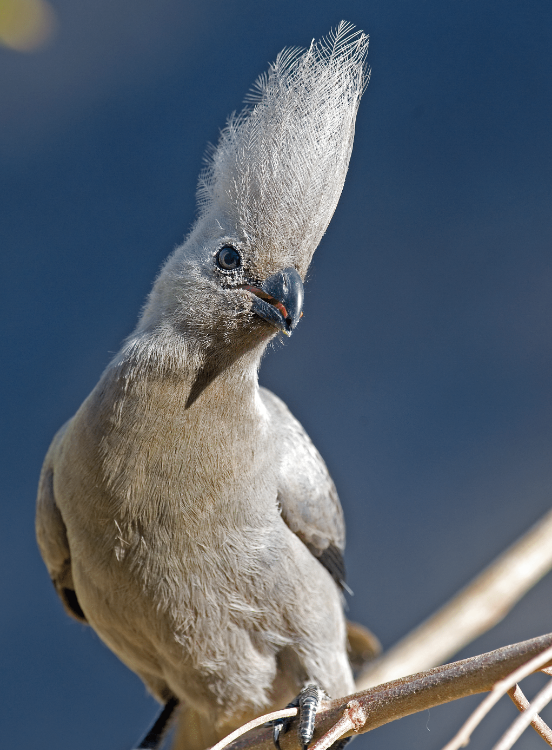
Bahnhof Hotel, Aus: History on its doorstep
July 26, 2012Egumbo Lodge, Walvis Bay – A touch of style
July 26, 2012Grey Go-away-bird
Corythaixoides concolor
Roberts No 373
by Pompie Burger
I remember the first time a Gab came into our garden to drink water. Helga phoned me at work to tell me this incredible news. Little did we know that a few months later a gathering of these birds would sit in the Dombeya [wild pear] tree above the bird feeder in the morning, waiting for me to dish up their Granny Smith apple for breakfast, even having the audacity to call me names.
Their behaviour differs markedly from that of the other ‘apple eaters’, the mousebirds, insofar as their nutritional practices take place in a very prim and proper way, with the birds picking small pieces from the apple as if they were connoisseurs.
When a colleague asked me one day what the big grey bird visiting his garden was, I decided to feature Gabs in the next Bird’s-eye View.
Grey Go-away-birds are grouped with turacos – the Knysna, Schalow’s, Livingstone’s, Purple-crested and Ross’s turacos. Interestingly enough, the name turaco derives from the turacoverdin pigment that colours the green feathers and turacin that colours the red feathers of turacos.
Obviously Gabs missed out when these pigments were handed out, which resulted in their common names: previously Grey Lourie, currently Grey Go-away-bird. The reason for their lack of colour is possibly that they occur in the drier woodlands, where exaggerated colours would be wasted. What they lack in colour, however, they make up for in dexterity when moving around in trees. When all is said and done, they are probably best known for their distinctive, drawn-out nasal call, making their Afrikaans name, Kwêvoël, a spot-on description of the species.
Grey Go-away-birds are one of only six turaco species in the world, all endemic to Africa, and all with a crest and bare skin around their eyes. They occur virtually throughout Namibia, with the exception of the southern parts of the country. Their diet consists mostly of fruit (Granny Smith apples) – also of flowers and nectar. Novo, I hope this will help you identify your big grey birds in future.
This article appeared in the April/ May 2011 edition of Travel News Namibia.
Based in Windhoek, Pompie Burger is an orthopaedic surgeon whose part-time passion is photography, in particular wildlife, and specifically birds. This regularly takes him to the most remote corners of the country, resulting in riveting images and articles.
Pompie is the author and photographer of the coffee table book Birds of Namibia, which was published in 2008. The book contains articles and photographs which attest to the insight and knowledge of an accomplished observer.
Read more of his articles in our Birding Section.


